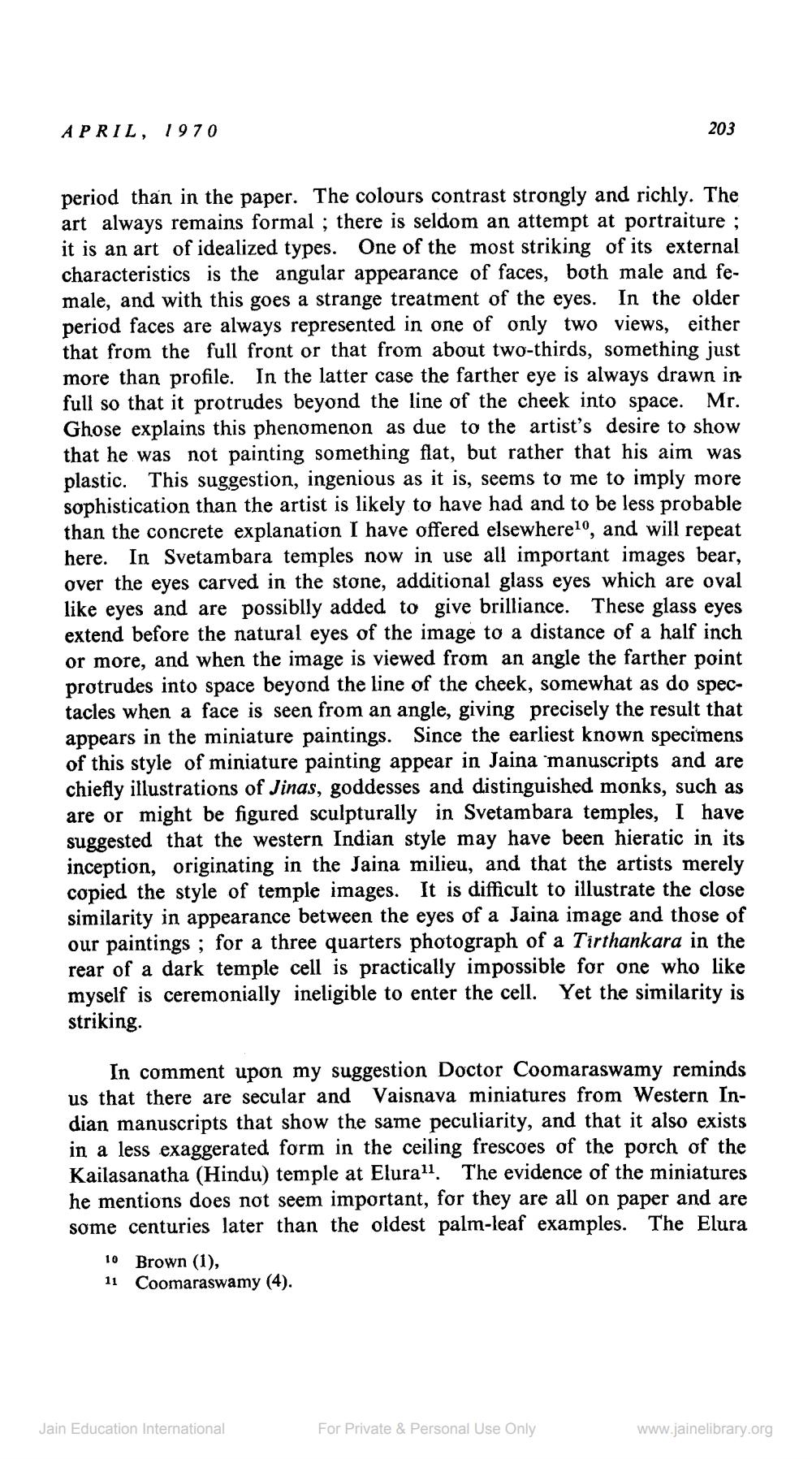Book Title: Jain Journal 1970 04 Author(s): Jain Bhawan Publication Publisher: Jain Bhawan Publication View full book textPage 9
________________ APRIL, 1970 period than in the paper. The colours contrast strongly and richly. The art always remains formal; there is seldom an attempt at portraiture ; it is an art of idealized types. One of the most striking of its external characteristics is the angular appearance of faces, both male and female, and with this goes a strange treatment of the eyes. In the older period faces are always represented in one of only two views, either that from the full front or that from about two-thirds, something just more than profile. In the latter case the farther eye is always drawn in full so that it protrudes beyond the line of the cheek into space. Mr. Ghose explains this phenomenon as due to the artist's desire to show that he was not painting something flat, but rather that his aim was plastic. This suggestion, ingenious as it is, seems to me to imply more sophistication than the artist is likely to have had and to be less probable than the concrete explanation I have offered elsewhere1o, and will repeat here. In Svetambara temples now in use all important images bear, over the eyes carved in the stone, additional glass eyes which are oval like eyes and are possiblly added to give brilliance. These glass eyes extend before the natural eyes of the image to a distance of a half inch or more, and when the image is viewed from an angle the farther point protrudes into space beyond the line of the cheek, somewhat as do spectacles when a face is seen from an angle, giving precisely the result that appears in the miniature paintings. Since the earliest known specimens of this style of miniature painting appear in Jaina manuscripts and are chiefly illustrations of Jinas, goddesses and distinguished monks, such as are or might be figured sculpturally in Svetambara temples, I have suggested that the western Indian style may have been hieratic in its inception, originating in the Jaina milieu, and that the artists merely copied the style of temple images. It is difficult to illustrate the close similarity in appearance between the eyes of a Jaina image and those of our paintings; for a three quarters photograph of a Tirthankara in the rear of a dark temple cell is practically impossible for one who like myself is ceremonially ineligible to enter the cell. Yet the similarity is striking. In comment upon my suggestion Doctor Coomaraswamy reminds us that there are secular and Vaisnava miniatures from Western Indian manuscripts that show the same peculiarity, and that it also exists in a less exaggerated form in the ceiling frescoes of the porch of the Kailasanatha (Hindu) temple at Elura11. The evidence of the miniatures he mentions does not seem important, for they are all on paper and are some centuries later than the oldest palm-leaf examples. The Elura 10 Brown (1), Coomaraswamy (4). 11 203 Jain Education International For Private & Personal Use Only www.jainelibrary.orgPage Navigation
1 ... 7 8 9 10 11 12 13 14 15 16 17 18 19 20 21 22 23 24 25 26 27 28 29 30 31 32 33 34 35 36 37 38 39 40 41 42 43 44 45 46 47 48 49 50 51 52 53 54 55
